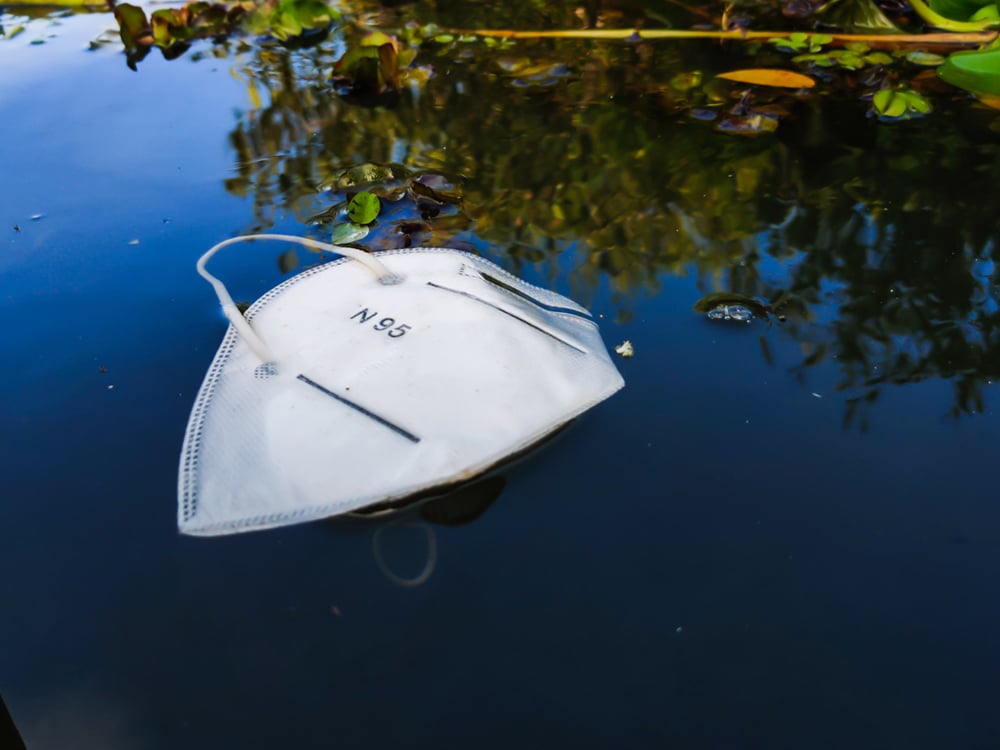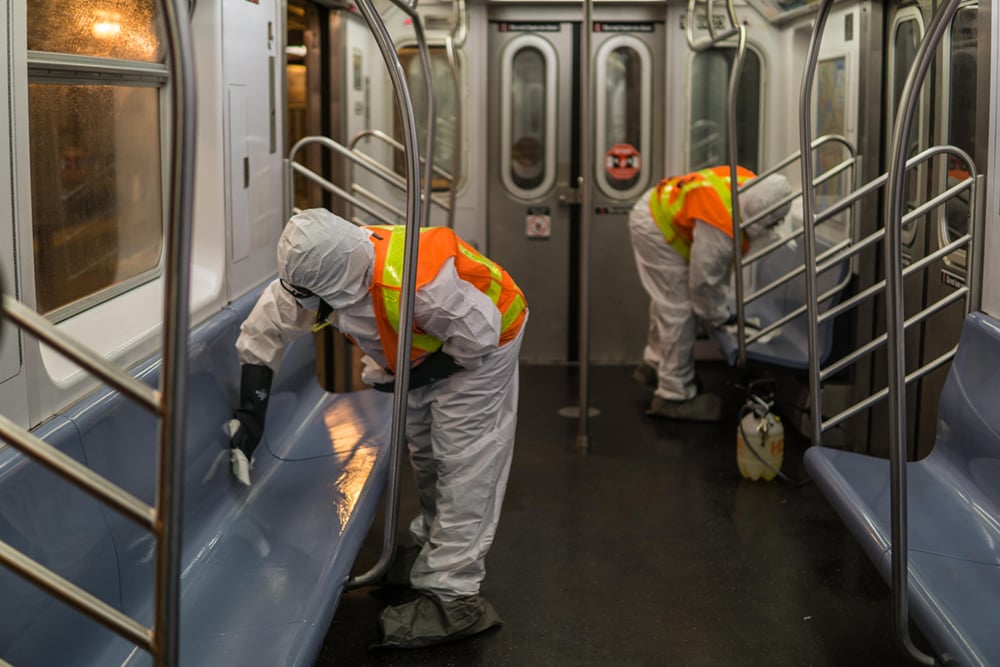FirmoGraphs tracks and analyzes weekly and monthly meeting minutes from more than 1000 municipal and utility boards nationwide. One current application of this research, and our related natural language processing tools, is to look at COVID-related discussions pertaining to U.S. municipal infrastructure.
In our last report, we were discussing how vital infrastructure sectors, such as water and transit sectors, are dealing with consequences COVID-19 pandemic made and is still making. This time, we are still focusing on the COVID-related discussions in these two sectors.
Water Sector

With many residents facing reduction of work hours or loss of employment, water utility assistance programs are supporting more people than ever before. A recent trend in the meeting minutes showed agencies responding with budget amendments, extended payment assistance programs, and deferred rate increases.
On July 13, 2020, the Board of Public Utilities of the California’s City of Riverside discussed the impact of COVID-19 pandemic, monthly water and power supply and Utility assistance programs. General Manager Todd Corbin updated the Board on the COVID-19 situation and its impact on the Utility. He reported that Riverside Public Utilities Emergency Recovery Assistance Program (ERAP) has 1,500 approved applicants for $250 one-time bill assistance for residents affected by loss of employment during COVID-19 pandemic. He also informed the Board on plans to expand the program with Boards approval.
In California, the Inland Empire Utilities Agency Board of Directors approved on June 19, 2019, the Agency’s Biennial Budget for fiscal years 2019/20 and 2020/21. On July 15, 2020, upon reviewing the second budget year, the Finance and Administration Committee proposed budget amendments related to all Agency programs. Amendments related to the Regional Wastewater, Recycled Water, and Recharge Water programs and Ten-Year Forecast (TYF), formerly Ten-Year Capital Improvement Plan for the FYs 2021- 2030, along with the equal regional rates and fees. The proposed amendment represents a decrease in Uses of Funds of $8.1 million and a decrease in Sources of Funds of $16.6 million, with a net impact on Agency reserves of $8.9 million for FY 2020/21. The proposed Rate Resolution includes various charges for the Extra-Territorial Wastewater Monthly fee, Laboratory, Equipment Lease, and Non-Reclaimable pass-through charges. The proposed amendment consists of a 12-month deferral of all rate increases for FY 2020/21.
On July 14, 2020, Colorado's Aurora's Water Citizen's Water Advisory Committee discussed the State’s legislative efforts. Despite a 10-week hiatus caused by COVID-19 pandemic, the legislature introduced 651 bills, out of which Aurora Water supported 15. One particular law related to the COVID-19 pandemic stood out. HB20-1412 COVID-19 Utility Bill Payment-Related Assistance allocated $10 million of the federal CARES Act funding to the Colorado Energy Office to provide direct utility bill payment assistance to the residents and does not include water service bills. The 2021 Budget was proposed with no rate or fee increase, and limited operating budget increases. Water revenues are trending close to plan, with development fee projections lower than budget due to the economic impact of COVID-19 on development activity in the second half of the year. In 2021, Utility expects sales to increase in comparison to 2020. Current Aurora Water CIP projected the need to issue about $122 million in debt to fund it’s SEAM facility project.
Transit Sector

The transit sector continues to face daily difficulties during the global coronavirus pandemic. All agencies surveyed are holding discussions about budgets in the context of CARES Act funding. The CARES Act is supporting local, state and tribal governments as they navigate the financial impact of the COVID-19 pandemic. While ridership declines, these agencies look for ways to cover their operating costs with the funding.
On June 11, 2020, Arizona's Valley Metro Rail Staff recommended that the Board of Directors approve the Fiscal Year 2021 Proposed Operating and Capital Budget of $335.1 million. However, as a result of the expected economic impacts of the COVID-19 pandemic, some reductions to the operating budget were made. The updated Proposed budget includes Federal Funding from the CARES Act provided by Federal Transit Administration (FTA) to account for loss of revenues and support current levels of service. The Staff stated that the CARES Act funds will largely be used in FY21, with very little left to support service in FY22 and beyond.
California's North County Transit District (NCTD) held a meeting on June 18, 2020, when members of the Board discussed the development of the proposed FY2021 Operating Budget and CARES Act funds distribution. Board Member Jenkins expressed concern on whether the CARES Act funds can be used for insurance cost increases and COVID-19 expenses, which Chief Financial Officer, affirmed. In its April meeting, the Board received a detailed update regarding the financial impacts of COVID-19 and the staff's proposed financial strategy for FY2020 and FY2021. There are no changes to the Proposed FY2021 Operating Budget from the draft presented on the May 21, 2020 Board meeting. NCTD will have an operating budget for FY2021, with revenues and expenditures totaling at $127.4 million. The Capital Budget for FY2021 totals $39.5 million. The FY2021-FY2025 unconstrained Capital Improvement Program (CIP) totals $288.5 million for the five years. Due to the decrease of ridership by more than 75% and expected revenues downturns, for fiscal years 2020 and 2021, the District will supplement NCTD the loss of fare revenue and sales-dependent grant revenues with federal CARES Act funds. Also, NCTD established strategic working groups to support a 5-year plan to implement improvements to increase ridership and revenue and support recovery from the impacts of COVID-19.
In its July Transit and Bus Committee Meeting, Metropolitan Transportation Authority (MTA) Committee Members presented Preliminary Monthly Report with June financial results. New York City Transit paid ridership of $24.8 million was $172 million under budget, of which subway ridership of $23.9 million was $124 million under budget, and bus ridership of $0.5 million was $47.3 million under budget, and farebox revenue of $81.9 million was $319.6 million under budget.Other revenue exceeded budget in June by $594.1 million, due to receipt of CARES Act funding. Both ridership and revenue declines are entirely due to COVID-19 travel limitations.
What Next?

We do this work to help our customers know where their utility and municipal customers are headed. The point is to provide insights to help you pivot and move your business during and after the COVID-19 pandemic. FirmoGraphs will continue to employ our Power Search tool, watching developments in municipal infrastructure and meeting minutes.
Set a meeting with us to learn more about the FirmoGraphs Power Search tool, and how you can optimize your business position with actionable intelligence.
Disclaimer
None of the information we provide may be taken as legal advice. Please consult an attorney if you require a legal interpretation of this information.
Any information contained on this website or within any attachments is offered without representation or warranty as to its accuracy or completeness and FirmoGraphs, LLC cannot be held responsible for loss or damage caused by errors, omission, misprints or your misinterpretation of such information. Seek competent professional advice prior to relying on or utilizing such information in any manner as any such use is at your own risk.



